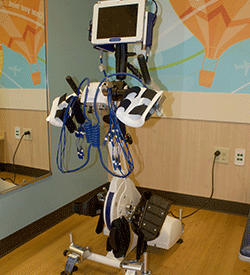What to Expect During Your Inpatient Stay With Rehabilitation Medicine
If your child requires intensive therapy, we offer highly specialized inpatient care.
Located on Cincinnati Children's Burnet Campus, our 12-bed inpatient unit serves children and adolescents, ages 1 to 18.
As part of a top-ranked children's hospital, our environment for recovery and functional improvement is unmatched. We offer two therapy gyms with state-of-the-art, advanced technologies and equipment including virtual motion and robotic-assisted systems to aid in accelerating recovery of motor and cognitive skills.
Our patients also have access to an inpatient school classroom, child life activity centers, community outings and school visits, and more.
As one of three CARF-accredited pediatric programs in the state, we are committed to providing the best possible care to your child and keeping you closely involved in the entire process.
Preparing for Your Stay
While preparing for your stay, there are a few items you may want to bring:
- Comfortable, loose-fitting clothes
- Sweater, sweatshirt or jacket
- Personal care items (brush, toothbrush, deodorant, etc.)
- Items to personalize the room and bring comfort (pillow, blanket, favorite toy, etc.)
Our care team can also provide a more detailed packing list for your child's stay.





